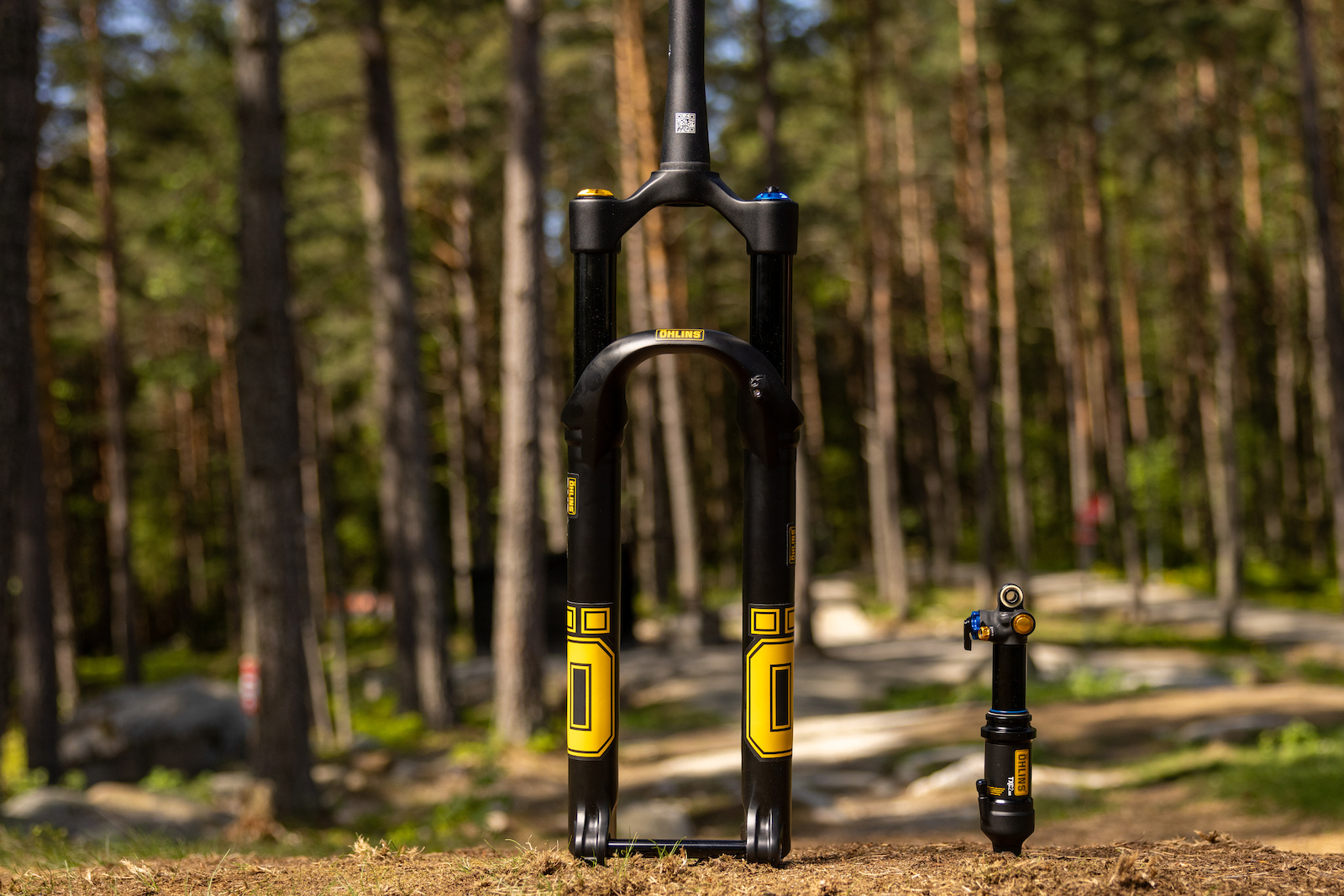Cross-country suspension might not get the tech limelight that its longer travel siblings, enduro and downhill, have. For most involved in XC over the years, light weight was top of the list, lockout next, and somewhere further down was how the suspension performed. It’s no surprise then to hear the stories of racers setting their pressures once a season and then wondering why they’re bouncing off the bottom-out bumpers all day long.
But in recent years, with the ever increasing technicality of cross-country race tracks, that priority list has had a bit of a re-ordering. While weight is still important, travel has increased to tickle the realms of what the weekend warrior might be running, suspension characteristics like anti-squat have been exploited to give bikes in-built efficiency rather than just locking out the suspension, and the XC racers piloting the bikes now demand more grip, control and support to allow them to find more time in the descents, not just the uphills.
Öhlins was born out of racing. Since its inception, back in the 70’s when Kenth Öhlin was just looking to make a better damper for the motocross bikes, they have amassed an astonishing 417 World Championships spanning several different genres of racing including Formula 1, MotoGP, World Rally, and motocross. They’re a relatively quiet bunch about it too, following more the Swedish mentality of letting the results do the talking.
But in their decade-long stint in the mountain bike world, catering to trail, enduro and downhill riders and racers, they’ve also been watching this evolution of XC racing and bikes, perhaps wondering when might be a good time to step in. As the XC world and the general short travel bike customer’s focus came more onto performance, Öhlins saw their time to enter the market.
And while World Championships are one thing, entering into the XC market also allowed Öhlins to set their sights on perhaps something more prestigious – the Olympics.
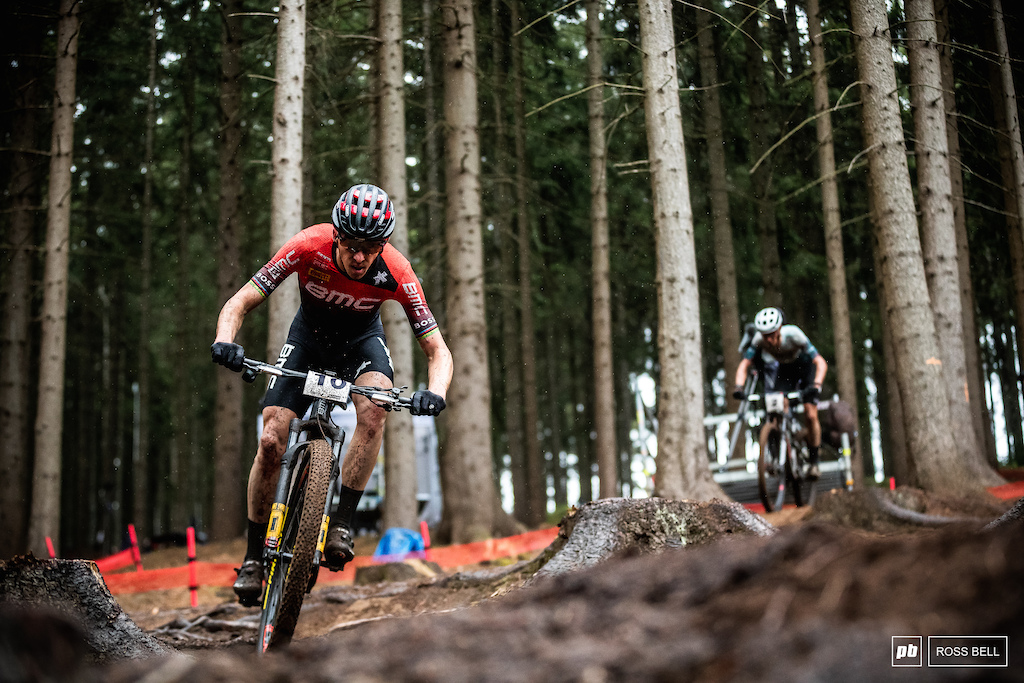
Over a beer at the Leogang stop of the 2022 World Cup series, the seed was planted to go XC racing with Team BMC and a contract was later signed without them ever testing the products. Some might say reckless. Others might say that’s confidence in who you’re shaking hands with.
Some eagle-eyed people caught onto Öhlins’ foray into XC when the team partnerships were announced for the 2023 season. But after a podium finish at their first XC World Cup under Jordan Sarrou, Öhlins now officially launch their take on XC suspension with the RXC34 m.1 fork and TXCair shocks.
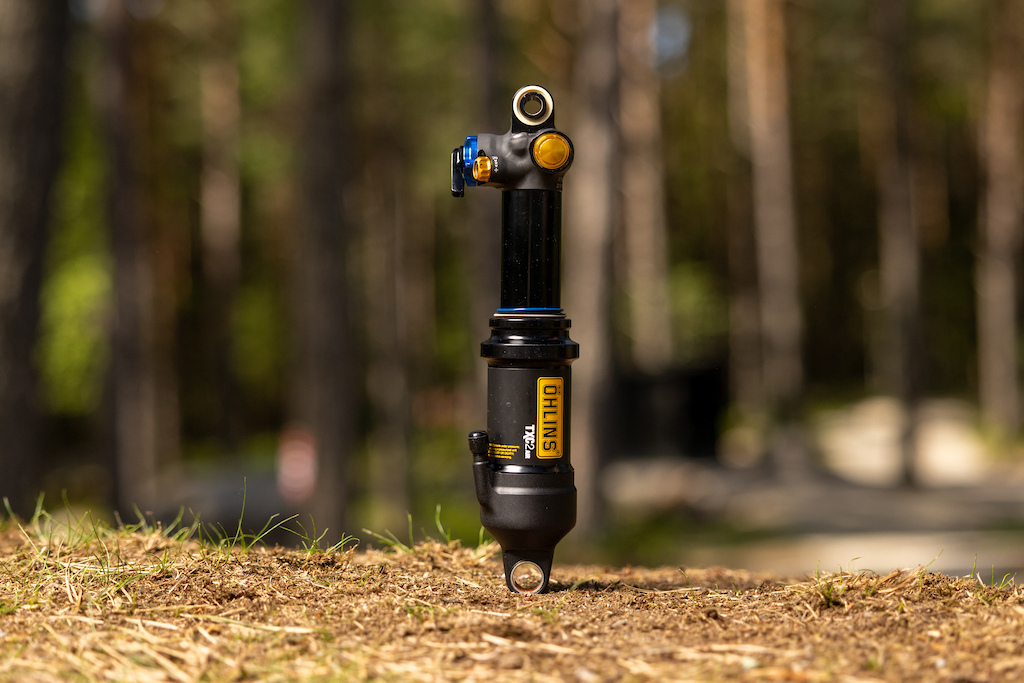
TXCAir Shocks
The goal with the entire XC suspension range was to create a system of shock and fork that worked together, and for the specific demands of XC bikes. Obvious, you might think, but this meant looking at how XC bikes are ridden on the modern courses, as well as how the bike is loaded in climbing sections versus how the rider needs the bike to perform in the downhills, considering also when they’re descending when fatigued.
• 2 air can options – TXC1Air & TXC2Air
• TXC1Air in 165/190 (37.5/40) and 185/210 (47.5/50) lengths
• TXC2Air in 165/190 (37.5/40/42/42.5) and 185/210 (47.5/50/52.5/55) lengths
• 3 damper modes
• Adjustable rebound & low-speed compression
• Remote & manual options
• Adjustable air spring volume
• From 245g – TXC1Air
• From 255g – TXC2Air
• $565 US or €695
The TXCAir shocks use Öhlins’ TTX damper technology. The twin tube architecture is something present in their other shocks for MTB and is something that they have great experience with. They even tried a single tube damper design during development, but came back to the twin tube for the performance benefits they found. In total they went through 6 different shock variants before finalising the TXCAir.
For the XC suspension, Öhlins added three defined, and familiar, modes – Open, Pedal, and Lock Out. Nothing revolutionary, but where it gets interesting is how Öhlins tuned these three modes for the specifics of XC, and balanced them with the air spring characteristics.
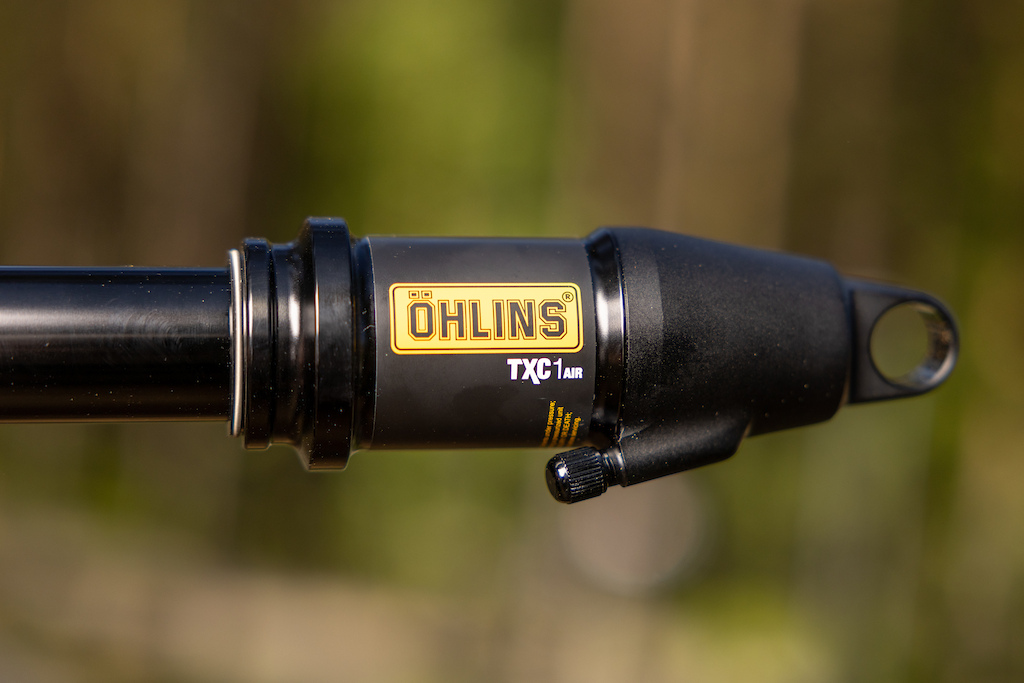
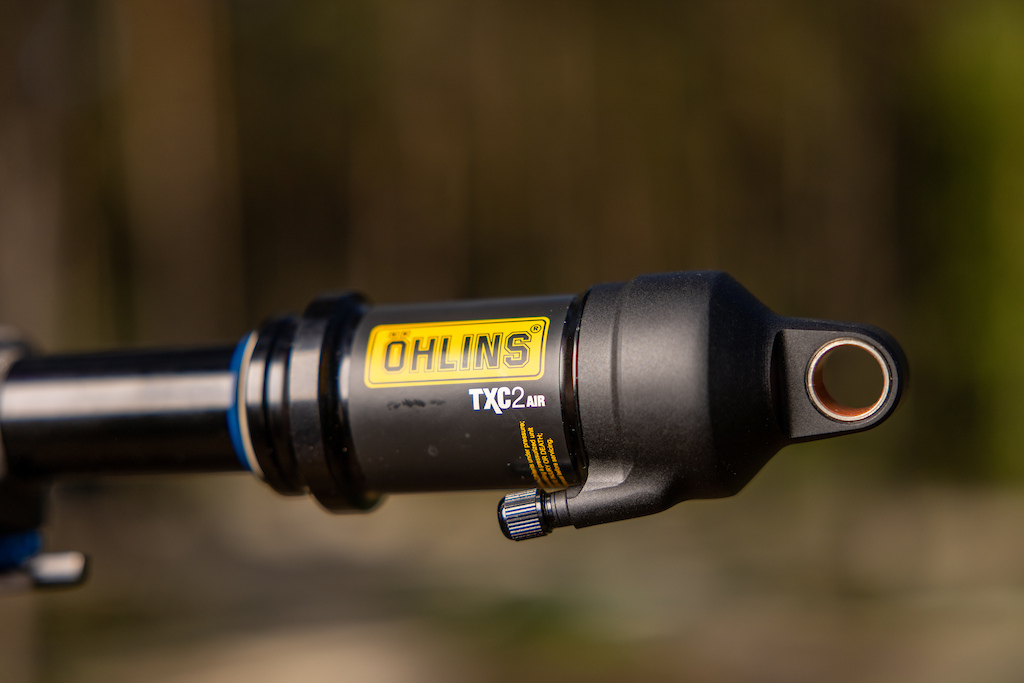
Open mode is tuned to have great traction, but more importantly, support and control. Lots of other XC suspension is certainly working the most in open mode, but it can all too easily be an uncontrolled mess that makes the short amount of travel available a handful to manage. The damper characteristics in Open mode tie in with the fork’s stiffness traits to give a platform to ride hard and one that builds in support as the rider pushes harder and harder.
It’s also in Open mode that the manual versions of the shock, and fork, have their low speed compression adjustments. Riders can tune the feel with 16 clicks of adjustment.
Pedal mode is easy to understand where to use it. But the interesting part of it is in the damper response. At slower compression shaft speeds there is more support than in Open mode, helping keep the suspension and geometry of the bike too impacted from the rider inputs when pedalling. It then builds its support as the shaft speeds increase, but not to the extent of Open mode. This gives the suspension the ability to move for impacts and bumps and keep the rider comfortable, but also keep the wheel in contact with the ground and maintain traction when climbing.
Lock Out mode shifts the damper support up to its highest through the entire shaft speed range, but never exceeds that of Open mode, and is intended to be used in flat-out sprint scenarios on smoother terrain.
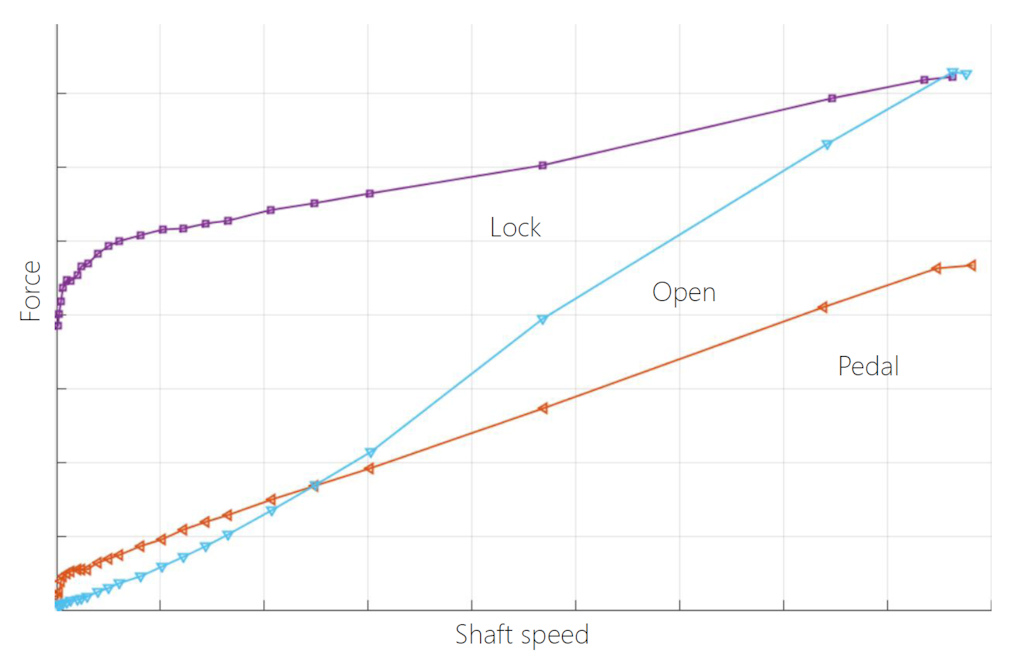
The rebound damping response of the TXCAir shocks has been tuned to give good control of the slow shaft speed movements when the rider is sat down and encountering bigger holes and impacts, much like the R35 tune available in some of their other shocks. It’s also tuned a little faster in high-speed rebound than other applications like enduro and downhill.
Both the TXC1Air and TXC2Air have an easy to use system for changing both the volume spacers and stroke. Simple spacers clip onto the “mushroom” in the eyelet end of the shock, while clip-on travel reducers move the mushroom further up inside the shock and limit the travel. Both can be done by any home mechanic in a couple of minutes and with no mess.
TXC1Air shocks come as remote only and have external rebound adjustment, whereas the TXC2Air shocks are remote or manual, with the latter having that addition of externally adjustable low speed compression. It is possible to swap the shock, and fork, between remote and manual options with adjuster kits.
TXCAir shocks are available in 165mm and 185mm trunnion mount lengths as well as 190mm and 210mm standard lengths.
TXC1Air shocks have stroke options of 37.5 – 40mm for the shorter shock lengths, and 47.5 – 50mm for the longer shocks. TXC2Air shocks up the stroke lengths to 37.5 – 45mm and 47.5 – 55mm for the respective shock lengths.
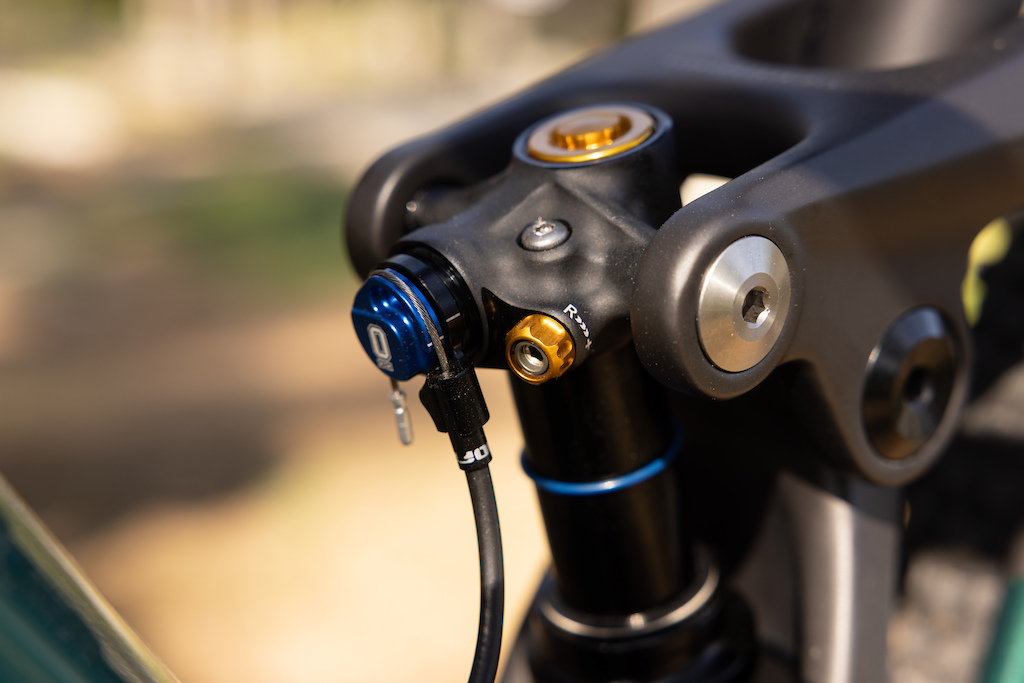
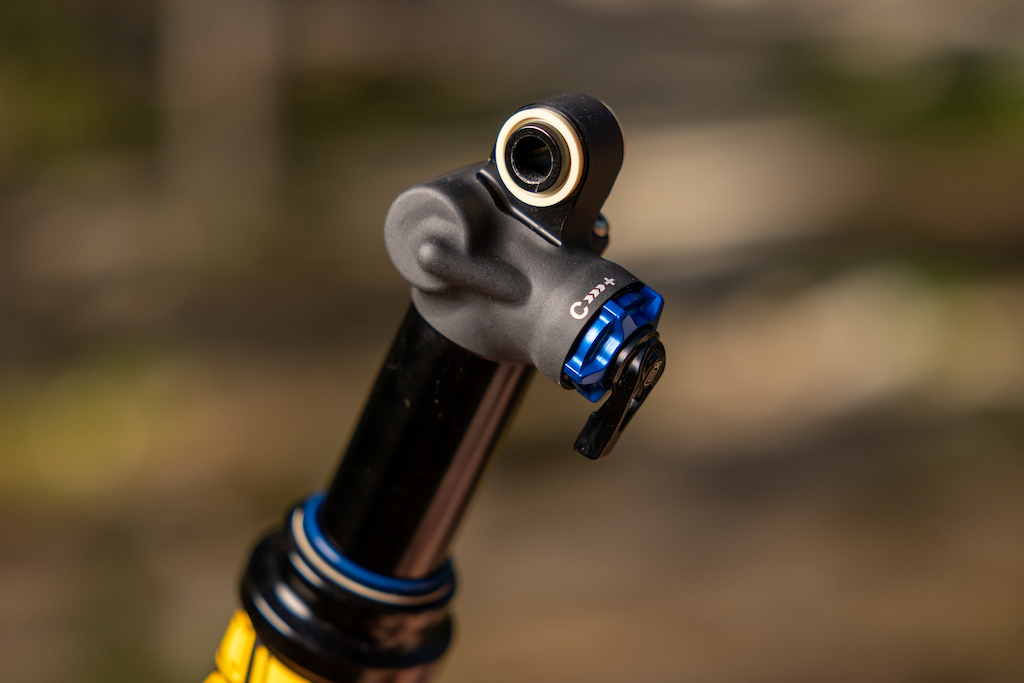
Weights for the TXC1Air start at 245g and for the TXC2Air at 255g. The volume spacers and travel reducers are included in the box with only the TXC2Air shocks, and available for purchase on the TXC1Air shocks.
RockShox’s SIDLuxe Ultimate starts at 231g (190 x 45, claimed), with Fox’s recently released Float SL weighing 249g (190 x 45, claimed) and their new Float weighing 310g (190 x 45, claimed). There really isn’t much between them all.
TXCAir shocks retail for $565 US or €695. Euro price including VAT.

RXC34 m.1 Fork
Using the RXF34 lowers also meant that they could use a pinch bolt axle system, allowing the forks to have good alignment and promote sensitivity.
The RXC34 fork is available only as a 29er with a 44mm fork offset. Max tire size is up at 74mm, to accommodate the ever-widening tires of modern XC bikes and have good mud clearance too.
• Aluminium or carbon fibre CSU versions
• 29″ wheel only, 44mm offset
• 100mm – 130mm travel
• 34mm stanchions
• OTX14 damper
• 3 damper modes
• Adjustable rebound & low-speed compression
• Remote & manual options
• 2 chamber air spring with adjustable volumes
• 1476g – 100mm Race version
• 1496g – 110/120mm carbon version
• 1598g – 110/120mm aluminium version
• $1390 US or €1695 – Carbon version
• $1190 US or €1495 – Aluminium version
The steerer crown unit of the RXC34 is unique to the fork, though, with two versions. One uses a familiar aluminum steerer crown unit, or CSU, and the other uses a carbon fiber CSU to shave 102g off the weight. There’s even a Race version that further optimises the composite CSU for just 100mm of travel and saves another 20g. All versions of the carbon fiber CSU have a built-in aluminium headset crown race.
The air spring of the RXC34 is familiar to the RXF34, in the way that it uses a 2 chamber system instead of 3, found on the RXF36, RXF38 and DH38. But the RXC34 air spring uses a larger negative volume, compared to the RXF34, to prioritise sensitivity, especially when a racer is sat down and climbing uphill. In that situation, much less load is on the front contact patch and so they wanted the fork to be able to absorb impacts and maintain grip. The large negative chamber also helps the fork build support through the air spring as the rider gets deeper into the travel, with a long and tapered bottom out bumper also playing a huge role in how the fork handles the energy of deep stroke impacts.
The larger negative chamber volume was achieved by adding the mushroom-like bulge on top of the main piston, which also adjusted the air springs’ progressivity, in the same way a volume spacer would. But generally, shorter travel forks need some help in the air spring ramp up due to their lack of travel, so the change in main chamber volume was a good thing.
It’s possible to adjust the volume inside that main, positive, air chamber with spacers and can be done by the user. It’s also possible to fine tune the fork feel further with spacers in the negative air chamber. But Öhlins recommend that this be done by a service centre, as it needs shaft clamps to gain access to the chamber and the assurance that you torque it all back up to spec with thread locker.

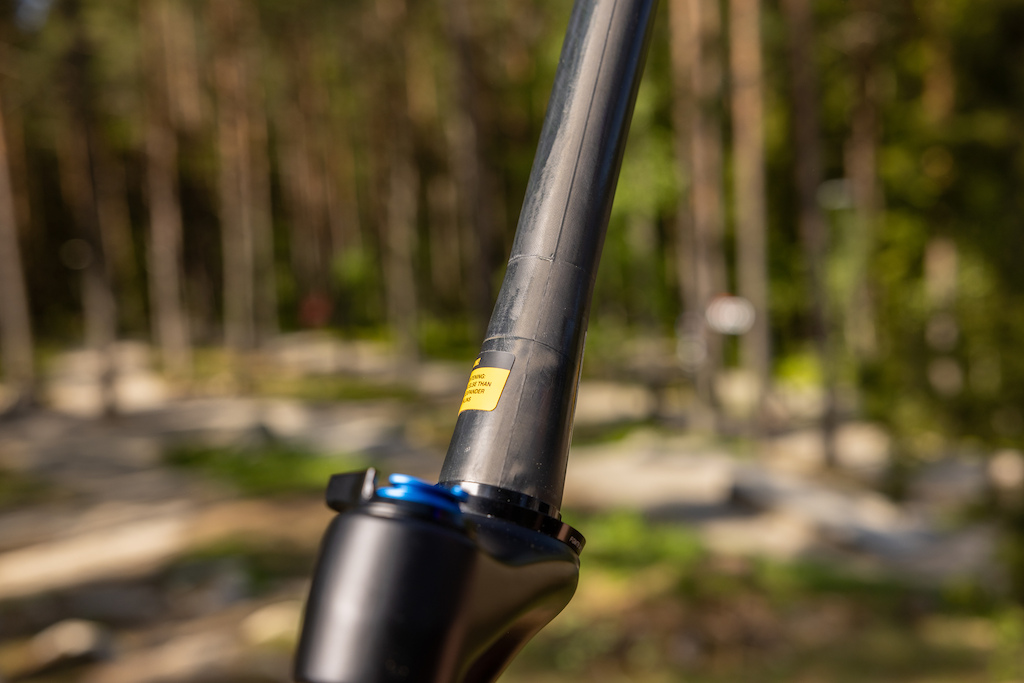
While the RXC34 is available to buy as a complete fork up to 120mm travel, Öhlins also enabled it to be stretched to 130mm, should the need arise. Who knows where XC bikes will evolve over the coming years, so a simple air spring unit swap can give more party up front. The air spring and damper cartridge of the RXC34 and RXF34 forks can also be interchanged.
Much like the race day damper from RockShox, the OTX14 is a very slimline design, and has you wondering where they managed to pack all of the magic. It uses a bladder reservoir at the top of the damper and a 14mm diameter piston that was developed with that XC system in mind. Öhlins sought to find a low friction seal design, again to ensure suppleness and traction in those low load scenarios. The OTX14 damper is around 100g lighter than the OTX18 damper found in the RXF34.
The same Open, Pedal and Lock Out modes are present in the fork. The remote operated fork has external rebound adjustment, while the manually adjusted fork has external rebound and low-speed compression adjustment, with the low speed compression adjustment working in the Open model only.


Being developed together with the shock, the fork uses the same attention to detail in the damper characteristics but looks at the different loading the fork sees on the bike and the different inputs that come in between the rider being seated and the bike going uphill, versus the rider being stood and the bike going downhill.
The 100mm travel Race version of the RXC34 comes in at 1476g, with the 110 – 120mm carbon version weighing 1496g and the aluminum version of the same travel range being 1598g. A 100mm travel aluminum CSU version will be available later.
That’s heavier than the Sid SL, 1326g (29″, 100mm, claimed), which has 32mm chassis, but closer to the regular Sid, 1537g (29″, 120mm, claimed), with its 35mm chassis. Fox’s 32 Step Cast comes in 1443g (29″, 100mm, actual) with the 34 Step Cast starting at 1496g (29″, 120mm, claimed) for a complete weight reference.
The aluminum version of the RXC34 m.1 retails for $1190 US or €1495, with the carbon fiber version being a bit more expensive at $1390 US or €1695. Euro prices including VAT.
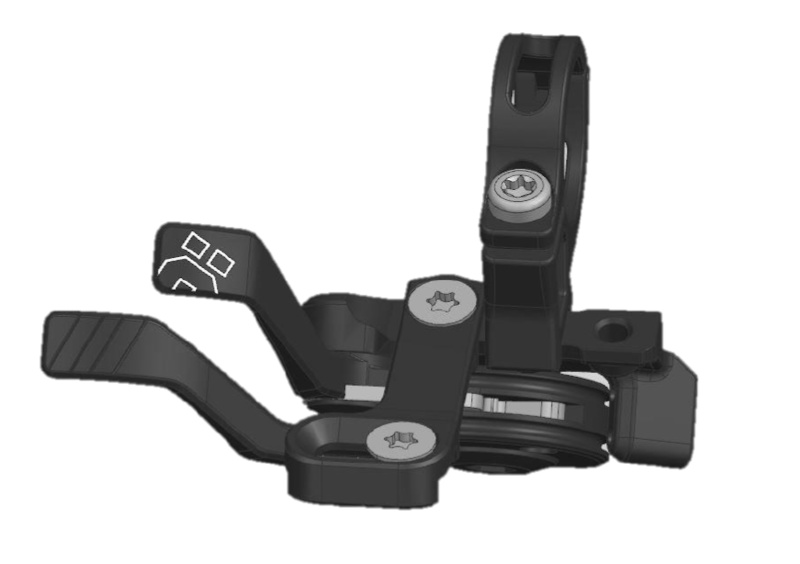
Remote
As much as Öhlins might not have liked the idea of a remote for their other suspension products, it was kind of necessary for the XC suspension. Some racers use the remote to play with the suspension feel for just a couple of metres of track. Other racers seem to use their dropper post more than their remote, whereas others don’t even use a dropper. With all the different preferences, Öhlins wanted to develop a remote that could be modular to adapt to the different bike setups.
First and foremost, the Öhlins remote adjusts the remote equipped RXC34 and TXCAir shocks at the same time, through their Open, Pedal and Lock Out modes. It comes in a bar clamp version that can also double up with SRAM’s Matchmaker system, and has two mount positions. An additional dropper remote can then be bolted on with the adaptor, which also has a range of positions.
The standard remote pulls 7.5mm of cable, so it’s easy to pick and mix the Öhlins fork and shock with the likes of Scott’s Twinloc remote or Orbea’s Squid lock. An adapter that converts the fork and shock to work with 5.5mm of cable pull will be available, allowing the suspension to work with the DT Swiss remote, that Team BMC is using.
First Ride Impressions
When the call came if I was interested in testing XC suspension, I responded that if it had handlebars and wheels, I was in. While I might ride more downhill bikes than anything nowadays, there was a period of time not so long ago when I was working at Scott that our main bike was an XC bike. The Lunchtime World Cup is a hotly fought, daily event and saw different takes on XC ranging from all out 100mm travel, crazy light bikes to what we might now see as modern XC, with more travel, wider tires, a dropper post, and more aggressive components.
The test bike for the day was the Mondraker F Podium Carbon R. While short on travel, its potential comes from the more modern geometry, sizing and suspension characteristics. It was equipped with the carbon version of the RXC34 m.1 and TXC1Air shock, both operated by the Öhlins remote on the bars. While the bike was full XC, I still had my DH shoes on.
Nevertheless, the initial setup was simple. The recommended pressures for the fork, 95psi, were bang on, and we were recommended to aim for slightly less than 30% shock stroke sag but in a seated position. On the F Podium that equated to 165psi. A few quick laps around the car park allowed me to set the rebound to a ballpark feel, but more importantly, make it feel balanced front and back.
We started with a couple of shorter loops in the Sigtuna Bike Arena, 40 minutes North of Stockholm, that consisted of an all-weather, slightly loose gravel surface, some jumps and drops and generally good flow. This meant we could get an initial feel and quickly make any adjustments before heading off for a bigger, 4.1km, loop that took in more of the forest and brought in a lot more roots, rocks and natural terrain. Short sharp ups with technical steps flowed into winding downhills that often needed you to pilot, rather than just hang on, to get the most speed out of the track. Flatter sections needed a mix of pumping and pedalling while being careful with line choice. Pushing hard around the loop made it easy to feel how the bike and suspension worked when fatigued and despite being only a very small zone for riding, it seemed to have a bit of everything representing modern XC. We were then free to lap until our hearts were content, or we’d depleted the supply of biscuits.
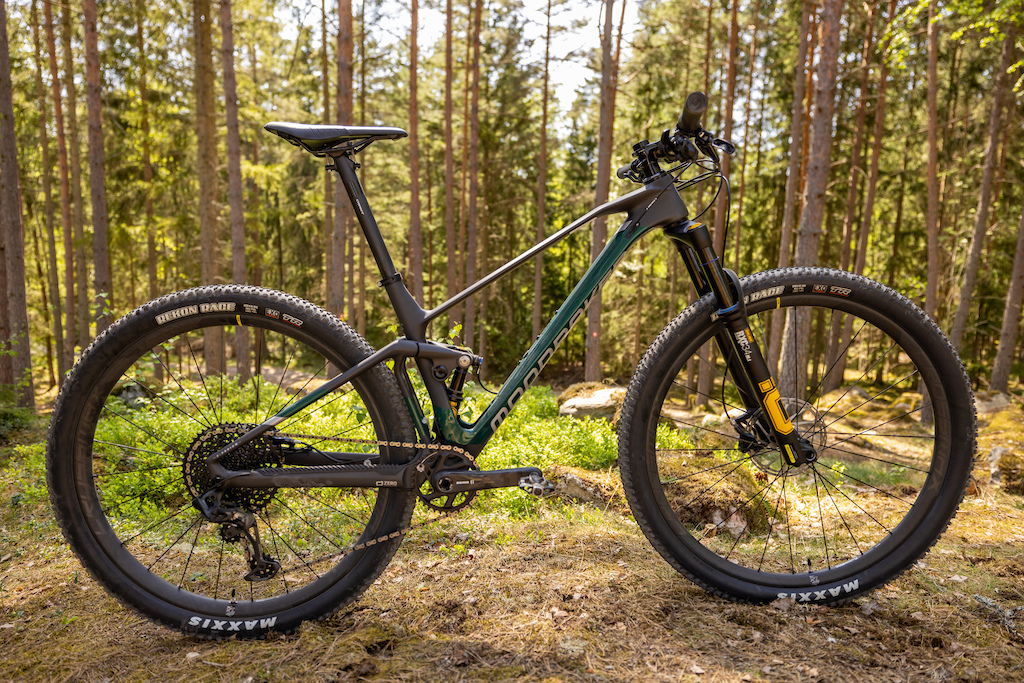
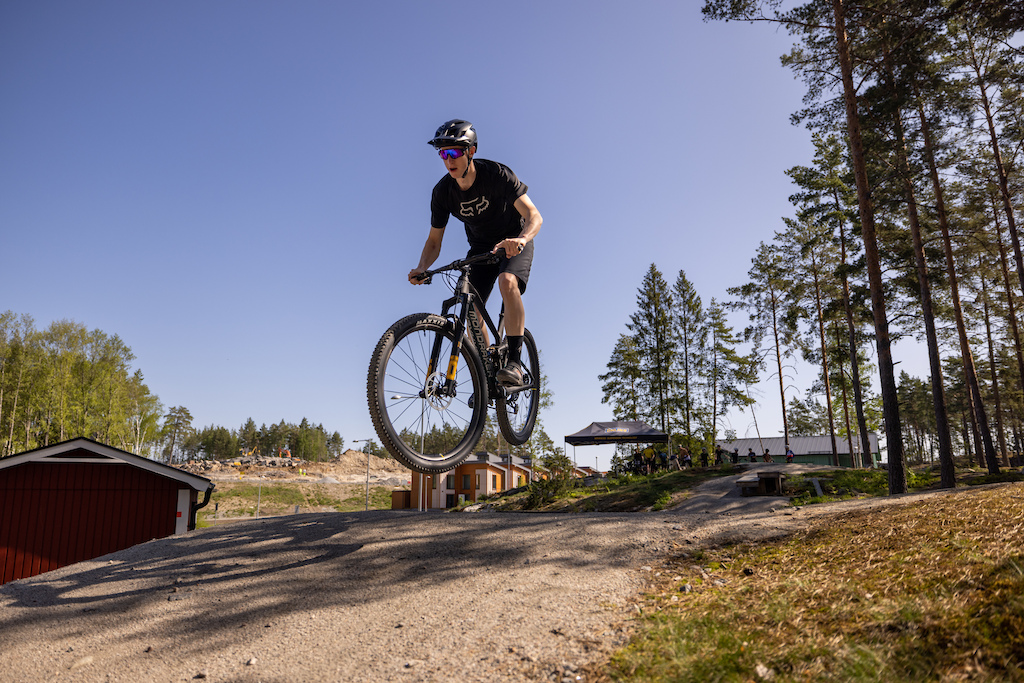
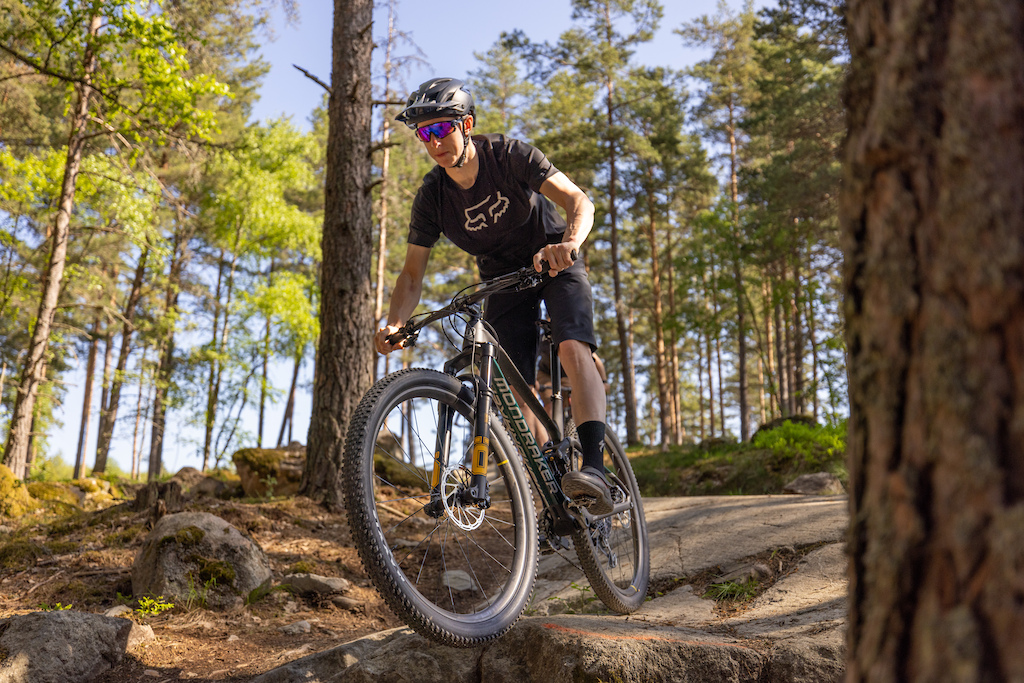
From the get go, I was impressed by the amount of support that the Öhlins suspension was providing. As you learned the loops, you could push harder, and each time you did, the suspension was upping its support level too. I never once got the feeling that the Open mode was compromising the overall control of the suspension just to have it, well, open. It was comfortable and plush over small fluttery bumps and roots while being full of body when you grabbed the little bike by the horns and attacked the downhills. This build in composure was reminiscent of Öhlins’ longer travel suspension products.
All the while the suppleness, especially in the fork, was also impressive. Open mode was very good for all the downhill sections, but you weren’t punished on the climbs when you left it in Open. You didn’t have heaps of unwanted bob from the suspension if you sprinted or pumped hard and it felt very controlled and composed for such a small amount of travel. This support always kept the bike in a good ride height zone, and so the bike always felt in a good shape, ready to take on the oncoming trail. There were plenty of opportunities to get deep into the travel, with drops and pulls, and when you did, the suspension dealt with the energy so nicely on the way in and rebounded controlled in few cycles, meaning you weren’t left fazed by the impact and were ready to keep pushing on to the next section of trail.
Interestingly though, Pedal mode might have been the most impressive for me. There was just enough low speed support from that initial step up in the damping to filter out the rider pedalling inputs and give the bike a more efficient feeling. But never did I get that XC suspension compromise of it then rattling your bones. In Pedal mode the bike was impressively comfortable and controlled when the hits came in, or when you left it in Pedal mode for the downhills. It also never gave the feeling of getting bogged down into the suspension when you hit a bigger step, while sitting down on a climb. Sometimes that bog down can result in a delay and hook up as the bike needs a second to get up and over the step. But this never felt the case. This balance in efficiency and comfort made it less fatiguing for the entire body, but also made my left thumb go into overdrive as I would change modes so often to extract the most amount of speed out of a transition from climb to descent or vice versa.
One of the shorter loops had a mini blast on tarmac to get back to the pits and was an opportunity to try the Lock Out mode. While I’ll never be putting out the watts of any of Team BMC, it certainly firmed up the bike considerably and made it feel like every ounce of power was going through to advancing the bike. But it didn’t feel like a complete lock out, with that teeth-gritting spike in harshness, and you could still ride it over loose gravel and up steps without destroying your joints if you hit something.
The Öhlins remote was easy to use and ergonomically never gave any problems or interfered with the other controls or your hand. You never had to give a thought to where you needed to stab your thumb, and the pressures needed to navigate through the various modes was never of concern. It just went about its job flawlessly the entire day.
After a few of the bigger laps, and realising that I really didn’t find a need to change anything in the setup, I decided to do just that to experiment with how the adjusters affected the feel of the suspension. Being that I was on the remote versions of the shock and fork, that meant playing with the rebound. Perhaps a small gripe is the need to use a tool to adjust the rebound on the shock, whereas the fork uses a conventional thumb wheel. It’s a common size allen key, but the mosquitos in the forest seemed to know this and would pounce as you stopped to adjust. However, adjusting as little as one or two clicks would manifest in a tangible difference to the bike. Öhlins seem to strike a good balance in their clicks, with one being enough to feel the change, without it being so much of a change that you wished you had half a click. I experimented with both faster and slower, and eventually came back to my initial settings. Once again showing that with Öhlins suspension, it’s easy to get to a good setup in the suspension without much effort or fuss. Having suspension properly set up, and balanced, is key. So if you can get there faster with less hassle, then all the better.
The gaps in peaks between the most comfortable and the most controlled suspension can vary in size greatly. It’s hard sometimes to balance the two without compromises elsewhere in plushness and bottom out resistance. And with so little travel, it’s really challenging in XC suspension, but the RXC34 and TXCAir shocks really seem to have got a good balance of the two, and they feel like they do work together, front and back, across the breadths of gradients and terrains that an XC bike will encounter.
Öhlins talked quite a bit about waiting for the right moment to enter the XC suspension market. Their focus as a brand has always been on suspension performance, and with that now being in the sights of more XC racers and riders, it seems like the fitting time to come out with products that really prioritise that.
Talk is one thing, but after riding the RXC34 and TXCAir shocks, it was easy to feel that what they were saying was true. Their suspension feels like it was developed around an XC rider on an XC bike on an XC course. It balances suppleness with support, something that other XC suspension struggles to do. It’s developed to suit either end of the bike, and the feel of the fork and shock while climbing feels like they’re working together for the same goal. The same is true when you ride downhill, and this is where that building control and composed feeling, an Öhlins signature, is there in bucket loads.
That’s mightily impressive, considering they only have 100mm in some cases to do all this with. So impressive that I’m considering adding an XC bike back into my quiver and equipping it with this Swedish gold.


